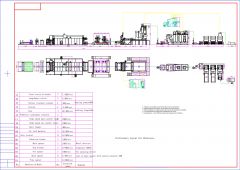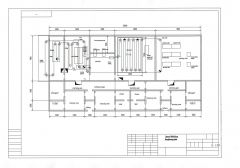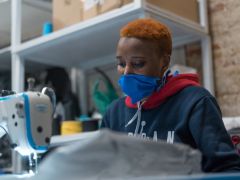Search results for: 'used S'
- Related search terms
- used Su
- Used Ga
- used foam gr
- used+foam+cutting+machine
- Used+Gas+Turbine+Generator
-
 G-4424-A COMPLETE CHICKEN SLAUGHTER LINE 500 PER HOURREFERENCE NUMBER: G-4424-A COMPLETE CHICKEN SLAUGHTER LINE 500 PER HOUR QUANTITY AVAILABLE: 1 Learn More
G-4424-A COMPLETE CHICKEN SLAUGHTER LINE 500 PER HOURREFERENCE NUMBER: G-4424-A COMPLETE CHICKEN SLAUGHTER LINE 500 PER HOUR QUANTITY AVAILABLE: 1 Learn More -
 G-4424 COMPLETE CHICKEN SLAUGHTER LINE 500 PER HOURREFERENCE NUMBER: G-4424 COMPLETE CHICKEN SLAUGHTER LINE 500 PER HOUR QUANTITY AVAILABLE: 1 Learn More
G-4424 COMPLETE CHICKEN SLAUGHTER LINE 500 PER HOURREFERENCE NUMBER: G-4424 COMPLETE CHICKEN SLAUGHTER LINE 500 PER HOUR QUANTITY AVAILABLE: 1 Learn More -
 M-7402 VARIOUS FORMS OF CACAO
M-7402 VARIOUS FORMS OF CACAOM-7402 VARIOUS FORMS OF CACAO
Learn MoreITEM
DESCRIPTION
CHARACTERISTICS
1
COCOA BUTTER
MADE FROM RAW COCOA, UTZ STANDARD. USED IN THE BEAUTY INDUSTRY: ANTIOXIDANT, SKIN (LIPID 99.6%)
2
PURE COCOA POWDER
MADE FROM 100% DRIED FERMENTED COCOA BEANS, BUTTER SEPARATES, SPECIAL FLAVOR, UTZ STANDARD (LIPID 17.6%)
3
COCOA POWDER 1.2
MADE FROM 100% FERMENTED COCOA BEANS, BASED ON UTZ STANDARDS. (LIPID 13.6%)
4
CACAO MASS
MADE FROM RAW COCOA, UTZ STANDARD, USED AS RAW MATERIALS IN THE FOOD INDUSTRY, SUCH AS PRODUCTION OF CHOCOLATE, CHOCOLATE COVERED CAKE
5
COCOA NIBS
MADE FROM 100% FERMENTED COCOA BEANS, BASED ON UTZ STANDARDS. DRINKING DIRECTLY OR USED AS MATERIALS IN THE FOOD INDUSTRY
6
DRIED COCOA BEANS
100% DRIED FERMENTED COCOA BEANS, UTZ STANDARDS
7
ROASTED COCOA BEANS
MADE FROM 100% DRIED FERMENTED COCOA BEANS AND ROASTED, UTZ STANDARDS
8
ROASTED COCOA BEANS WITHOUT SHELLS
MADE FROM 100% DRIED FERMENTED COCOA BEANS AND ROASTED, UTZ STANDARDS
-
 YY-2251 AIRLAID PRODUCTION LINE, FINAL PRODUCT WIDTH 2200mmYY-2251 AIRLAID PRODUCTION LINE, FINAL PRODUCT WIDTH 2200mm ITEM 001 BALE OPENER (2 SETS) AND SEALED BALE OPENER (1 SET) ITEM 002 FIBER OPENING MACHINE (FOR LOW MELT FIBER OR PP) - 1 SET ITEM 003 PRE-OPENER – 1 SET ITEM 004 BIG CHAMBER BLENDER – 1 SET ITEM 005 MAIN-OPENER – 1 SET ITEM 006 VIBRATING FEEDER – 1 SET ITEM 007 CONDENSER – 2 SETS ITEM 008 AUTO-LEVER - 1 SET ITEM 009 AIR LAID MACHINE – 1 SET ITEM 010 AUTO-LEVER – 1 SET ITEM 011 BATT FEEDER – 1 SET ITEM 012 HIGH SPEED SINGLE SHAFT SINGLE BOARD PRE NEEDLE LOOM – 1 SET ITEM 013 HIGH SPEED SINGLE SHAFT SINGLE BOARD MAIN NEEDLE LOOM – 1 SET ITEM 014 DOUBLE BELT THERMAL-BONDED OVEN – 1 SET ITEM 015 DOUBLE-ROLLER CALENDER MACHINE – 1 SET ITEM 016 COOLING UNIT – 1 SET Learn More
YY-2251 AIRLAID PRODUCTION LINE, FINAL PRODUCT WIDTH 2200mmYY-2251 AIRLAID PRODUCTION LINE, FINAL PRODUCT WIDTH 2200mm ITEM 001 BALE OPENER (2 SETS) AND SEALED BALE OPENER (1 SET) ITEM 002 FIBER OPENING MACHINE (FOR LOW MELT FIBER OR PP) - 1 SET ITEM 003 PRE-OPENER – 1 SET ITEM 004 BIG CHAMBER BLENDER – 1 SET ITEM 005 MAIN-OPENER – 1 SET ITEM 006 VIBRATING FEEDER – 1 SET ITEM 007 CONDENSER – 2 SETS ITEM 008 AUTO-LEVER - 1 SET ITEM 009 AIR LAID MACHINE – 1 SET ITEM 010 AUTO-LEVER – 1 SET ITEM 011 BATT FEEDER – 1 SET ITEM 012 HIGH SPEED SINGLE SHAFT SINGLE BOARD PRE NEEDLE LOOM – 1 SET ITEM 013 HIGH SPEED SINGLE SHAFT SINGLE BOARD MAIN NEEDLE LOOM – 1 SET ITEM 014 DOUBLE BELT THERMAL-BONDED OVEN – 1 SET ITEM 015 DOUBLE-ROLLER CALENDER MACHINE – 1 SET ITEM 016 COOLING UNIT – 1 SET Learn More -
 TT-5852 MASCOTT PLUS 25-30 CROSSLAPPER AND MONO_1AB_27-3000 NEEDLE LOOMTT-5852 MASCOTT PLUS 25-30 CROSSLAPPER AND MONO_1AB_27-3000 NEEDLE LOOM Learn More
TT-5852 MASCOTT PLUS 25-30 CROSSLAPPER AND MONO_1AB_27-3000 NEEDLE LOOMTT-5852 MASCOTT PLUS 25-30 CROSSLAPPER AND MONO_1AB_27-3000 NEEDLE LOOM Learn More -
 K-3378 CHICKEN SLAUGHTERING LINE – 500 BIRDS PER HOURREFERENCE NUMBER: K-3378 CHICKEN SLAUGHTERING LINE – 500 BIRDS PER HOUR QUANTITY AVAILABLE: 1 Learn More
K-3378 CHICKEN SLAUGHTERING LINE – 500 BIRDS PER HOURREFERENCE NUMBER: K-3378 CHICKEN SLAUGHTERING LINE – 500 BIRDS PER HOUR QUANTITY AVAILABLE: 1 Learn More -
 YY-3584 CBD/HEMP OIL EXTRACTION INTRODUCTIONYY-3584 CBD/HEMP OIL EXTRACTION INTRODUCTION THE CONTENT OF CBD OIL IN ALL PARTS OF HEMP ,USUALLY DECREASES ACCORDING TO THE ORDER OF BRACTS, FLOWERS, LEAVES, FINE STEMS AND THICK STEMS, AND THE CONTENT OF CBD IN THE FLOWERS AND LEAVES OF FEMALE FLOWERS IS THE HIGHEST, SO THE FLOWERS AND LEAVES ARE USUALLY SELECTED TO EXTRACT CBD OIL. OUR DEVELOPED HEMP OIL EXTRACTOR MACHINE (CENTRIFUGE MACHINE) IS ADAPT THE NEW TECHNOLOGY CAN TO MAKE THE EXTRACTOR TIME SHORT AND EFFICIENT EXTRACTION .THE EXTRACTOR MACHINE (CENTRIFUGE MACHINE) HAVE THE JACKET WHICH CAN KEEP THE INSIDE ETHANOL SOLUTION WITH HEMP RAW MATERIAL IN LOW TEMPERATURE. QUANTITY: 1 Learn More
YY-3584 CBD/HEMP OIL EXTRACTION INTRODUCTIONYY-3584 CBD/HEMP OIL EXTRACTION INTRODUCTION THE CONTENT OF CBD OIL IN ALL PARTS OF HEMP ,USUALLY DECREASES ACCORDING TO THE ORDER OF BRACTS, FLOWERS, LEAVES, FINE STEMS AND THICK STEMS, AND THE CONTENT OF CBD IN THE FLOWERS AND LEAVES OF FEMALE FLOWERS IS THE HIGHEST, SO THE FLOWERS AND LEAVES ARE USUALLY SELECTED TO EXTRACT CBD OIL. OUR DEVELOPED HEMP OIL EXTRACTOR MACHINE (CENTRIFUGE MACHINE) IS ADAPT THE NEW TECHNOLOGY CAN TO MAKE THE EXTRACTOR TIME SHORT AND EFFICIENT EXTRACTION .THE EXTRACTOR MACHINE (CENTRIFUGE MACHINE) HAVE THE JACKET WHICH CAN KEEP THE INSIDE ETHANOL SOLUTION WITH HEMP RAW MATERIAL IN LOW TEMPERATURE. QUANTITY: 1 Learn More -
 TT-7282 TETRA PAK ASEPTIC FILLING LINE A3 FLEX 200S UP TO 7000 L/H, YEAR 2003 TO 2010TT-7282 TETRA PAK ASEPTIC FILLING LINE A3 FLEX 200S UP TO 7000 L/H, YEAR 2003 TO 2010 1. BRAND: TETRA PAK® 2. SPEED: 7000 L/H 3. PRODUCTS: DAIRY, JUICE 4. CONTAINERS: BRIK 5. FORMATS: 0.20 L 6. SAFETY FEATURES: YES 7. FILL TYPE: ASEPTIC Learn More
TT-7282 TETRA PAK ASEPTIC FILLING LINE A3 FLEX 200S UP TO 7000 L/H, YEAR 2003 TO 2010TT-7282 TETRA PAK ASEPTIC FILLING LINE A3 FLEX 200S UP TO 7000 L/H, YEAR 2003 TO 2010 1. BRAND: TETRA PAK® 2. SPEED: 7000 L/H 3. PRODUCTS: DAIRY, JUICE 4. CONTAINERS: BRIK 5. FORMATS: 0.20 L 6. SAFETY FEATURES: YES 7. FILL TYPE: ASEPTIC Learn More -
 TT-6395 BOTTLING LINE SIDEL FOR STILL WATER UP TO 54000 BPH, YEAR 2014TT-6395 BOTTLING LINE SIDEL FOR STILL WATER UP TO 54000 BPH, YEAR 2014 1. SPEED: 54000 BPH 2. CONTAINERS: PET 3. FORMATS: 0.50 L 4. PRODUCT: WATER (STILL) QUANTITY: 1 Learn More
TT-6395 BOTTLING LINE SIDEL FOR STILL WATER UP TO 54000 BPH, YEAR 2014TT-6395 BOTTLING LINE SIDEL FOR STILL WATER UP TO 54000 BPH, YEAR 2014 1. SPEED: 54000 BPH 2. CONTAINERS: PET 3. FORMATS: 0.50 L 4. PRODUCT: WATER (STILL) QUANTITY: 1 Learn More -
 D-2388 What’s the Best Material for a Mask?
D-2388 What’s the Best Material for a Mask?Federal health officials have now recommended that we cover our faces with fabric during the coronavirus pandemic. But what material offers the most protection?
The Centers for Disease Control and Prevention has posted a no-sew mask pattern using a bandanna and a coffee filter as well as a video on making masks using rubber bands and folded fabrics found at home.
While a simple face covering can reduce the spread of coronavirus by blocking outgoing germs from coughs or sneezes of an infected person, experts say there is more variation in how much homemade masks might protect the wearer from incoming germs, depending on the fit and quality of the material used.
Scientists around the country have taken it upon themselves to identify everyday materials that do a better job of filtering microscopic particles. In recent tests, HEPA furnace filters scored well, as did vacuum cleaner bags, layers of 600-count pillowcases and fabric similar to flannel pajamas. Stacked coffee filters had medium scores. Scarves and bandanna material had the lowest scores, but still captured a small percentage of particles.
If you don’t have any of the materials that were tested, a simple light test can help you decide whether a fabric is a good candidate for a mask.
“Hold it up to a bright light,” said Dr. Scott Segal, chairman of anesthesiology at Wake Forest Baptist Health who recently studied homemade masks. “If light passes really easily through the fibers and you can almost see the fibers, it’s not a good fabric. If it’s a denser weave of thicker material and light doesn’t pass through it as much, that’s the material you want to use.”
Researchers say it’s important to remember that lab studies are conducted under perfect conditions with no leaks or gaps in the mask, but the test methods give us a way to compare materials. And while the degree of filtration for some homemade masks seems low, most of us — who are staying home and practicing social distancing in public — don’t need the high level of protection required for medical workers. More important, any face covering is better than none, especially if worn by a person who has the virus but doesn’t know it.
The biggest challenge of choosing a homemade mask material is to find a fabric that is dense enough to capture viral particles, but breathable enough that we can actually wear it. Some items being touted online promise high filtration scores, but the material would be unwearable.
Dressing Up for Work … at Home
Yang Wang, an assistant professor of environmental engineering at Missouri University of Science and Technology, worked with his graduate students to study various combinations of layered materials — including both air filters and fabric. “You need something that is efficient for removing particles, but you also need to breathe,” said Dr. Wang, who last fall won an international award for aerosol research.To test everyday materials, scientists are using methods similar to those used to test medical masks, which everybody agrees should be saved for medical workers who are exposed to high doses of virus from seeing infected patients. The best medical mask — called the N95 respirator — filters out at least 95 percent of particles as small as 0.3 microns. By comparison, a typical surgical mask — made using a rectangular piece of pleated fabric with elastic ear loops — has a filtration efficiency ranging from 60 to 80 percent.
Dr. Wang’s group tested two types of air filters. An allergy-reduction HVAC filter worked the best, capturing 89 percent of particles with one layer and 94 percent with two layers. A furnace filter captured 75 percent with two layers, but required six layers to achieve 95 percent. To find a filter similar to those tested, look for a minimum efficiency reporting value (MERV) rating of 12 or higher or a microparticle performance rating of 1900 or higher.
The problem with air filters is that they potentially could shed small fibers that would be risky to inhale. So if you want to use a filter, you need to sandwich the filter between two layers of cotton fabric. Dr. Wang said one of his grad students made his own mask by following the instructions in the C.D.C. video, but adding several layers of filter material inside a bandanna.
Dr. Wang’s group also found that when certain common fabrics were used, two layers offered far less protection than four layers. A 600 thread count pillow case captured just 22 percent of particles when doubled, but four layers captured nearly 60 percent. A thick woolen yarn scarf filtered 21 percent of particles in two layers, and 48.8 percent in four layers. A 100 percent cotton bandanna did the worst, capturing only 18.2 percent when doubled, and just 19.5 percent in four layers.
The group also tested Brew Rite and Natural Brew basket-style coffee filters, which, when stacked in three layers, showed 40 to 50 percent filtration efficiency — but they were less breathable than other options.
If you are lucky enough to know a quilter, ask them to make you a mask. Tests performed at the Wake Forest Institute for Regenerative Medicine in Winston-Salem, N.C., showed good results for homemade masks using quilting fabric. Dr. Segal, of Wake Forest Baptist Health, who led the study, noted that quilters tend to use high-quality, high-thread count cotton. The best homemade masks in his study were as good as surgical masks or slightly better, testing in the range of 70 to 79 percent filtration. Homemade masks that used flimsier fabric tested as low as 1 percent filtration, Dr. Segal said.
The best-performing designs were a mask constructed of two layers of high-quality, heavyweight “quilter’s cotton,” a two-layer mask made with thick batik fabric, and a double-layer mask with an inner layer of flannel and outer layer of cotton.
Bonnie Browning, executive show director for the American Quilter’s Society, said that quilters prefer tightly woven cottons and batik fabrics that stand up over time. Ms. Browning said most sewing machines can handle only two layers of fabric when making a pleated mask, but someone who wanted four layers of protection could wear two masks at a time.
Ms. Browning said she recently reached out to quilters on Facebook and heard from 71 people who have made a combined total of nearly 15,000 masks. “We quilters are very much in the thick of what’s going on with this,” said Ms. Browning, who lives in Paducah, Ky. “One thing most of us have is a stash of fabric.”
People who don’t sew could try a folded origami mask, created by Jiangmei Wu, assistant professor of interior design at Indiana University. Ms. Wu, who is known for her breathtaking folded artwork, said she began designing a folded mask out of a medical and building material called Tyvek, as well as vacuum bags, after her brother in Hong Kong, where mask wearing is common, suggested it. (DuPont, the maker of Tyvek, said in a statement that Tyvek is intended for medical apparel, not masks.) The folded mask pattern is free online, as is a video demonstrating the folding process. In tests at Missouri University and University of Virginia, scientists found that vacuum bags removed between 60 percent and 87 percent of particles. But some brands of vacuum bags may contain fiberglass or are harder to breathe through than other materials, and shouldn’t be used. Ms. Wu used a bag by EnviroCare Technologies, which has said it does not use fiberglass in its paper and synthetic cloth bags.
“I wanted to create an alternative for people who don’t sew,” said Ms. Wu, who said she is talking to various groups to find other materials that will be effective in a folded mask. “Given the shortage of all kinds of materials, even vacuum bags might run out.”
The scientists who conducted the tests used a standard of 0.3 microns because that is the measure used by the National Institute for Occupational Safety and Health for medical masks.
Linsey Marr, a Virginia Tech aerosol scientist and an expert in the transmission of viruses, said the certification method for respirators and HEPA filters focuses on 0.3 microns because particles around that size are the hardest to catch. While it seems counterintuitive, particles smaller than 0.1 microns are actually easier to catch because they have a lot of random motion that makes them bump into the filter fibers, she said.
“Even though coronavirus is around 0.1 microns, it floats around in a wide range of sizes, from around 0.2 to several hundred microns, because people shed the virus in respiratory fluid droplets that also contain lots of salts and proteins and other things,” said Dr. Marr. “Even if the water in the droplets fully evaporates, there’s still a lot of salt and proteins and other gunk that stays behind as solid or gel-like material. I think 0.3 microns is still useful for guidance because the minimum filtration efficiency will be somewhere around this size, and it’s what NIOSH uses.”
Learn More
